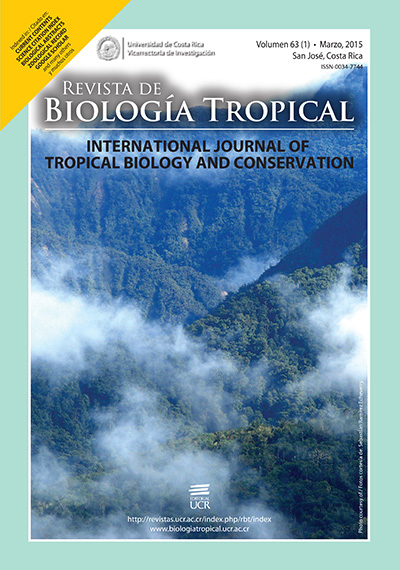Abstract
Toxoplasma gondii is an obligatory intracellular parasite that infects a wide range of warm-blooded animals and humans. Considering the severity of toxoplasmosis, side effects of current treatments, and the contribution of the ethnopharmacological knowledge for the treatment of parasitic infections, the aim of the present study was to investigate the efficacy of methanolic extracts from the fruits and leaves of Sambucus nigra against tachyzoite of T. gondii. For this, fruits and leaves of S. nigra were collected from Mazandaran province, Iran, were dried under the shade, and powdered using a commercial electrical blender. For extractions, methanol was used as solvent. Virulent RH strain of T. gondii was maintained in mice and macrophages containing tachyzoites were aspirated from the peritoneal cavity. Four concentrations (5, 10, 25 and 50mg/mL) of S. nigra extract were incubated with infected macrophages for 30, 60, 120 and 180 minutes and the viability of the tachyzoites were evaluated by trypan blue staining. Results showed that S. nigra fruit extracts at the concentrations of 5 and 10mg/mL killed 100% of T. gondii tachyzoites after 60 and 120 minutes, respectively; and concentrations of 25 and 50mg/mL killed 100% of the tachyzoites after 30 minutes. Additionally, extract of S. nigra leaves, at the concentrations of 5, 10 and 25mg/mLafter 180 minutes, and concentration of 50mg/mLafter 60 minutes, resulted with the highest efficacy. Our results showed that S. nigra has acceptable efficacy in vitro and the parasiticidal effect of fruit extract was significantly better than leaf extract. However, in vivo efficacy of this extract needs further investigation.
References
Ahmadiani, A., Fereidoni, M., Semnanian, S., Kamalinejad, M., & Saremi, S. (1998). Antinociceptive and anti-inflammatory effects of Sambucus ebulus rhizome extract in rats. Journal of Ethnopharmacology, 61, 229-235.
Ambroise-Thomas, P., & Pelloux, H. (1993). Toxoplasmosis - congenital and in immunocompromised patients: A parallel. Parasitology Today, 9, 61-63.
Asai, T., & Yasuhiro, S. (1990). Remarkable activities of nucleoside triphosphate hydrolase in the tachyzoites of both virulent and avirulent strains of Toxoplasma gondii. FEMS microbiology letters, 72, 89-92.
Bosch-Driessen, L. H., Verbraak, F. D., Suttorp-Schulten, M. S. A., van Ruyven, R. L. J., Klok, A. M., Hoyng, C. B., & Rothova, A. (2002). A prospective, randomized trial of pyrimethamine and azithromycin vs pyrimethamine and sulfadiazine for the treatment of ocular toxoplasmosis. American Journal of Ophthalmology, 134, 34-40.
Dadimoghaddam, Y., Daryani, A., Sharif, M., Ahmadpour, E., & Hossienikhah, Z. (2014). Tissue tropism and parasite burden of Toxoplasma gondii RH strain in experimentally infected mice. Asian Pacific Journal of Tropical Medicine, 7, 521-524.
Daryani, A., Hosseini, A. Z., & Dalimi, A. (2003). Immune responses against excreted/secreted antigens of Toxoplasma gondii tachyzoites in the murine model. Veterinary Parasitology, 113, 123-134.
De Oliveira, T. C., Silva, D. A. O., Rostkowska, C., Bla, S. R., Ferro, E. A. V., Magalhes, P. M., & Mineo, J. (2009). Toxoplasma gondii: Effects of Artemisia annua L. on susceptibility to infection in experimental models in vitro and in vivo. Experimental Parasitology, 122, 233-241.
Gholami, S. H., Rahimi-Esboei, B., Ebrahimzadeh, M. A., & Pourhajibagher, M. (2013). In vitro effect of Sambucus ebulus on scolices of Hydatid cysts. European Review for Medical and Pharmacological Sciences, 17, 1760-1765.
Gozalbes, R., Brun-Pascaud, M., Garcia-Domenech, R., Galvez, J., Girard, P. M., Doucet, J. P., & Derouin, F. (2000). Anti-Toxoplasma activities of 24 quinolones and fluoroquinolones in vitro: prediction of activity by molecular topology and virtual computational techniques. Antimicrobial Agents and Chemotherapy, 44, 2771-2776.
Johansen, O. P., Andersen, O. M., Nerdal, W., & Aksnes, D. W. (1991). Cyanidin 3-[6-(p-coumaroyl)-2-(xylosyl)-glucoside]-5-glucoside and other anthocyanins from fruits of Sambucus canadensis. Phytochemistry, 30, 4137-4141.
Jones, F. A. (1996). Herbs-useful plants. Their role in history and today. European Journal of Gastroenterology & Hepatology, 8, 1227-1231.
Mach, L., Scherf, W., Ammann, M., Poetsch, J., Bertsch, W., Marz, L., & Glossl, J. (1991). Purification and partial characterization of a novel lectin from elder (Sambucus nigra L.) fruit. Biochemical Journal, 278, 667-671.
Nissapatorn, V. (2009). Toxoplasmosis in HIV/AIDS: a living legacy. The Southeast Asian Journal of Tropical Medicine and Public Health, 40, 1158-1178.
Petersen, E. (2007). Toxoplasmosis. Seminars in Fetal and Neonatal Medicine, 12, 214-223.
Rahimi-Esboei, B., Ebrahimzadeh, M. A., Gholami, S., & Falah-Omrani, V. (2013). Anti-giardial activity of Sambucus ebulus. European Review for Medical and Pharmacological Sciences, 17, 2047-2050.
Rodriguez, J. B., & Szajnman, S. H. N. (2012). New antibacterials for the treatment of toxoplasmosis; a patent review. Expert Opinion on Therapeutic Patents, 22, 311-333.
Schmidt, D. R., Hogh, B., Andersen, O., Hansen, S. H., Dalhoff, K., & Petersen, E. (2006). Treatment of infants with congenital toxoplasmosis: tolerability and plasma concentrations of sulfadiazine and pyrimethamine. European Journal of Pediatrics, 165, 19-25.
Seigler, D. S. (1991). Cyanide and cyanogenic glycosides. Herbivores: Their interactions with secondary plant metabolites, 1, 35-77.
Serranti, D., Buonsenso, D., & Valentini, P. (2011). Congenital toxoplasmosis treatment. European Review for Medical and Pharmacological Sciences, 15, 193-198.
Silveira, C., Belfort Jr, R., Muccioli, C., Holland, G. N., Victora, C. G., Horta, B. L., & Nussenblatt, R. B. (2002). The effect of long-term intermittent trimethoprim/sulfamethoxazole treatment on recurrences of toxoplasmic retinochoroiditis. American Journal of Ophthalmology, 134, 41-46.
Vlachojannis, J. E., Cameron, M., & Chrubasik, S. (2010). A systematic review on the sambuci fructus effect and efficacy profiles. Phytotherapy Research, 24, 1-8.
Weiss, L. M., & Dubey, J. P. (2009). Toxoplasmosis: A history of clinical observations. International Journal for Parasitology, 39, 895-901.
World Health Organization. (1995). WHO model prescribing information: drugs used in parasitic diseases, World Health Organization.
Yang, X., Huang, B., Chen, J., Huang, S., Zheng, H., Lun, Z. R., & Lu, F. (2011). In vitro effects of aqueous extracts of Astragalus membranaceus and Scutellaria baicalensis GEORGI on Toxoplasma gondii. Parasitology Research, 110, 2221-2227.
Yeşilada, E., Gürbüz, I., & Shibata, H. (1999). Screening of Turkish anti-ulcerogenic folk remedies for anti-Helicobacter pylori activity. Journal of Ethnopharmacology, 66, 289-293.
##plugins.facebook.comentarios##

This work is licensed under a Creative Commons Attribution 4.0 International License.
Copyright (c) 2015 Revista de Biología Tropical






